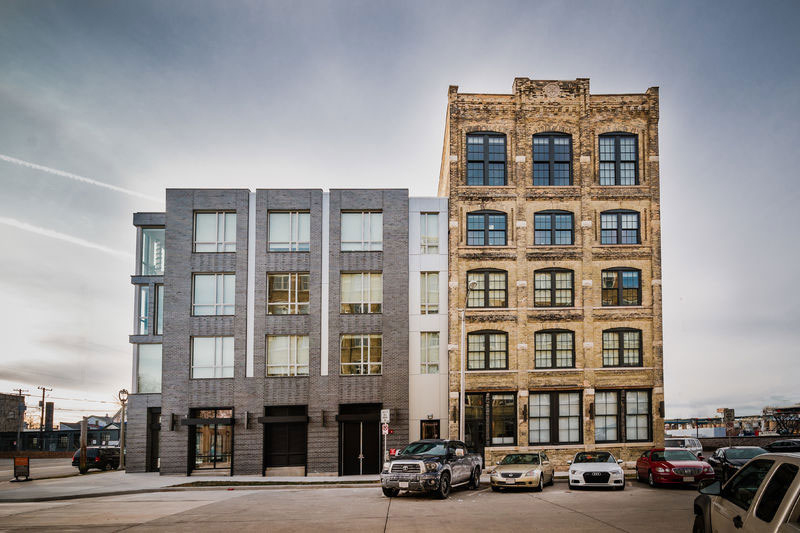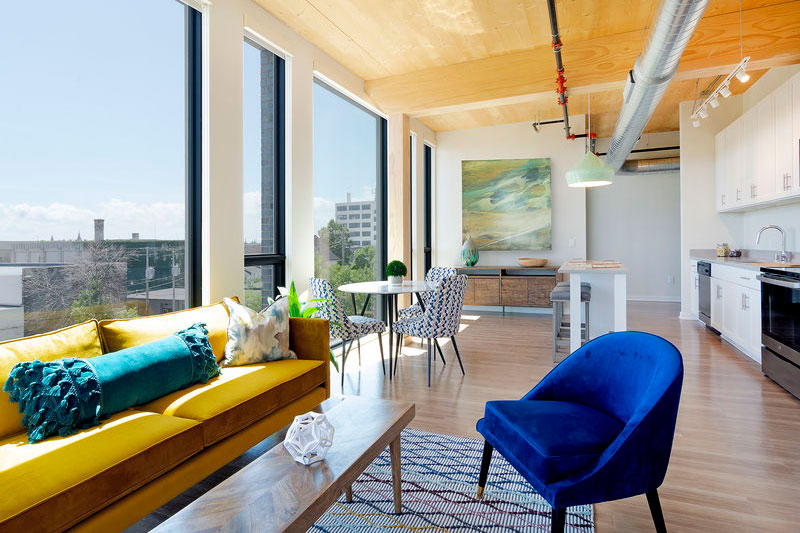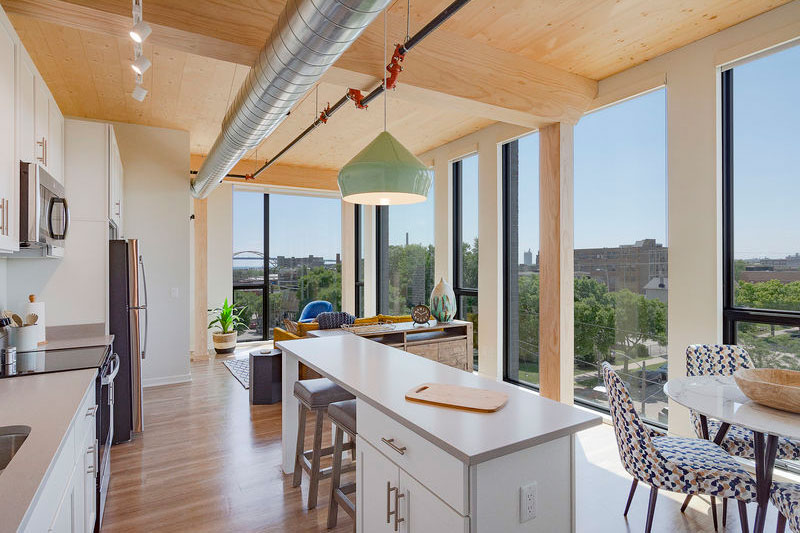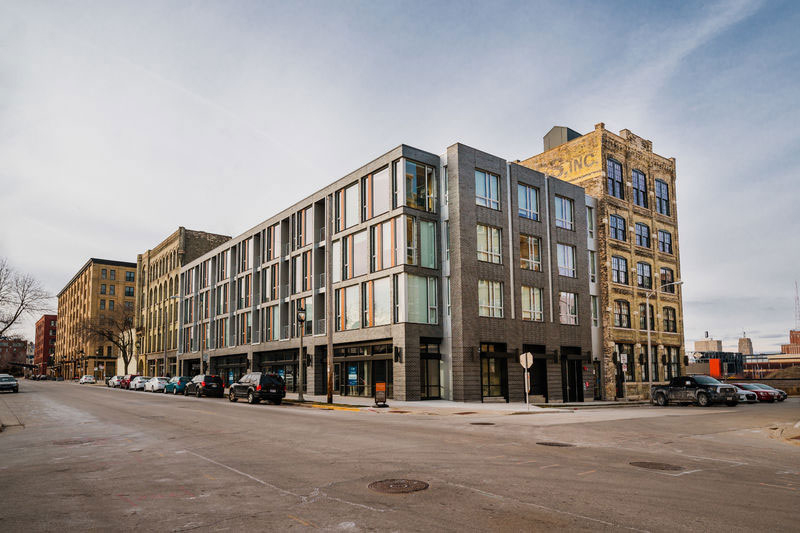It has been said that the greenest buildings are the ones that already exist. Adapting historic buildings for modern uses can create new community beacons that help achieve smart growth. ‘Adaptive reuse’ is the process of redeveloping structurally sound older buildings for economically viable modern uses, infusing new life into a historic shell.
Adaptive reuse can allow a project to significantly reduce its embodied carbon as well as the volume of materials sent to landfill through construction. Reuse also preserves authentic qualities of the built environment that provide a tangible link with the past. Historic districts around the country are experiencing revitalization as cities renovate these cultural monuments as anchors for redevelopment.
Walker’s Point is said to be one of the few remaining well-preserved neighborhoods in Milwaukee, Wisconsin. This historic district lies just south of downtown, showcasing its architectural roots through Greek revival, Federal and Italianate-style single family homes, and warehouse space dating back to the mid-1800s. Today this diverse working class neighborhood has some of the “city’s best nightclubs alongside award-winning restaurants and locally-made artisan food products.”

Photo by Roost Photography, courtesy of Engberg Anderson
A direct reflection of its historic, yet trendsetting locale, Milwaukee’s first mass timber building, Timber Lofts, is an adaptive reuse project that combines a 130-year-old warehouse renovation with new construction in an adjacent parcel. The two structures unite to create a 60-unit multi-family complex with ground-floor retail, walking distance to nearby amenities.
The building’s historic status, decreed by the National Park Service (NPS), opened access to a $2 million grant for the property’s renovation. However, the marriage of old and new added complexity to both the design and approval process. In response, architects Engberg Anderson’s unique vision aimed to define a contemporary architectural character for the building’s new addition without distracting from the timeless aesthetic of the existing artifact. They struck a balance with mass timber.
“The idea from the onset was to harmonize the existing building with new construction,” said Tim Wolosz, principal at Engberg Anderson. “The [developer and contractor] wanted to use cross-laminated timber (CLT), and I was thrilled. We were excited about the technology of mass timber and the opportunities it could provide.”
Past Meets Future

Photo by Roost Photography, courtesy of Engberg Anderson
One of the defining characteristics of the ambitious five-story, 28,000-square-foot renovation was to preserve and reuse original wood flooring from the historic landmark.
Individual boards were meticulously deconstructed, stacked, and set aside for cleaning and sandblasting to remove paint, exposing the wood’s maple grain. After subflooring and sound control materials were added, the original wood floor was reinstalled. In addition to the reclaimed wood floor, the original arched window openings, rolling fire doors, and exposed heavy timber frame, including wood joist rafters, also were preserved.
“We took a lot of time in making sure there was a seamless transition from the existing structure to the new building,” added Dan Wood, project superintendent for Catalyst Construction, Timber Loft’s contractor. “And you can see it right away…rustic timber beams and original hardwood flooring in the historic building, complemented by warm, raw CLT in the new structure.”
Catalyst’s idea to use CLT stemmed from their much-anticipated and highly publicized Ascent, a 25-story mass timber high rise currently under construction in Milwaukee.
Oversize windows provide ample sunlight and clear views of exposed CLT floors and ceilings in the remaining three levels. Interior walls are stick frame construction. Mass timber panels were installed without additional stain or sealants to highlight the pine’s natural blonde finish. Clean white walls provide a modern contrast to the natural wood surroundings. Outside, a charcoal brick façade harmonizes with the native Cream City brick of its historic neighbor.
Early Adopters Become “Big Fans”

Photo by Roost Photography, courtesy of Engberg Anderson
Material cost also was a consideration when choosing mass timber, and one that proved to pencil out. “The big myth for us was that mass timber is expensive,” said Wolosz. “The reality is, there is a lot to gain by offsetting costs. For example, less interstitial space between floors translates into less exterior material plus a reduction in components like resilient channels and insulation. When you start multiplying those savings by 400 square feet around the building, you see the true cost savings potential of mass timber. Now we’re huge fans. For every new project I start, I propose CLT as an option to consider.”
The Timber Lofts project was completed in Spring 2020, offering studio, one-bedroom and two-bedroom apartments. Residential units were 90% leased six months after opening and retail leasing is expected to increase after the pandemic. “Walker’s Point is a very diverse neighborhood, and existing residents and businesses feel strongly about keeping it that way,” concluded Eisenbrown.
“We received many compliments from people in the neighborhood about how beautiful that addition is. And I think that’s a major accomplishment because it’s not just about looking historic or just looking like the neighborhood. We want to harmonize. That’s what keeps it interesting.”


